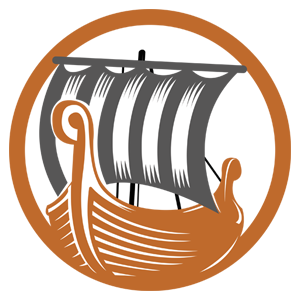1. Rental Cars
To rent or not to rent (a car that is) that is always a question in Europe. Three considerations: Public transportation, cost of parking and availability, and your itinerary. I would never rent a car in Paris. I regretted renting a car in Austin. Since we weren’t staying in Bilbao proper but in the countryside, we did rent a car, and it was an excellent decision. We were able to explore the Bilbao beaches and the Rioja wine region along with Bilbao, of course. The highways are ultra modern and rarely congested. A great tip: Rent through Costco. You’ll save at least a third of the cost.
2. What to Pack
For June weather, expect variable weather. Our Spanish friends told us “Spring had not sprung.” This meant overcast, cloudy days with some (more than some) rain mingled with bright sunny days. Definitely, bring layers.
3. Pintxos
Simply amazing! The best eating invention ever! The Basque word is pronounced as “Pinchos.” So what are they? Basically, they are individualized tapas meant for one person. Each bar has their version/speciality meant to be eaten with a beer or glass of wine. Many Spaniards move from bar to bar, indulging and socializing.
4. Vitoria
Vitoria, a smallish city south of Bilbao, is less famous but is worth visiting. The only reason this was on our radar was my son’s best friend and his wife and newborn son work and live there. We walked the beautiful medieval streets, charming plazas, impressive cathedrals, plus it is home to some of the best pintxos bars. It’s the capital of the Basque region. The mascot of the city is a statue of a walker, “El caminante,” super apropo since this is an incredibly walkable city.



5. Best Meal: La Sidre
By far our best meal in Spain was on the outskirts of Vitoria, at La Sidre, meaning The Cider. We arrived around 2:30 for la comida (the afternoon meal). A charming stone Basque house, we spent the next two and a half hours enjoying appetizers, entrees of meat and chicken and two desserts along with a white and a red wine. A highlight was the Salted Santoña Anchovies, a melt in your mouth dish.

5. Restaurants
Basque food is acclaimed for being one of the finest. We had great difficulty finding restaurants that were open. One reason is that Spanish restaurants open very late–the earliest is around 9 PM. We were there the first week in June and most restaurants were only open on Fridays and Saturdays. Finding an open restaurant became our mission. We would get instructions to an “open” restaurant and it was always closed. One desperate night, we asked a Basque farmer where to eat. He literally got in his car and drove us to the Best Western Hotel. We ended up eating pizza at the hotel restaurant.
6. Tipping
Hard to believe, but tipping is not expected in Spain. In fact, we heard Spaniards complaining about the tipping culture in the United States. However, for very good service a euro or two will be appreciated.
7. Game of Thrones: Dragonstone
The Game of Thrones is filmed in Ireland, Iceland, Croatia and Spain including the Basque Country. Specifically we were looking for San Juan de Gaztelugatxe where Jon Snow and Daenerys finally meet on the coast near Bilbao. So we got to the start of the hiking spot to take us to the island connected by the most magical walkway, but without enough time to complete the hike. We vow to return.
How to get there? San Juan de Gaztelugatxe is between Bakio and Bermeo. You will know you are close when you see the restaurant Eneperi. The path to the island is always open, but the church on the island my be closed.

Gatika home
8. Rural Bilbao: Gatika
We didn’t stay in Bilbao. We stayed in Gatika, a rural area about 15 minutes from Bilbao. We had an opportunity to do a Home Exchange with Gonzalo for one week. The GPS revolted when we typed in his address and took us to the general vicinity. Luckily, a friendly Basque gentleman took pity on our forlorn lost expressions. Evidently, this had happened before, and he had directed other home exchangers to Gonzalo’s. Buccolic and pastoral surroundings, we drove up to a patio with a fountain and lovely entrance. I highly recommend contrasting your trip with a stay in the countryside.
9. Poignant history: Guernica Peace Museum
You’ve probably heard the name Guernica, from the mural-sized painting by Picasso, his powerful depiction of the Nazi’s bombing of the Basque town of Guernica during the Spanish Civil War. The painting resides in Madrid at the Museo Nacional Centro de Arte Reina Sofia. We visited Guernica (the Basque spelling is Gernika) to tour the small museum commemorating this tragic event from June 1937. Called Gernika Peace Museum, one of its primary goals is to promote peace by navigating conflict.

10. Eusko Guide: A Basque Country Guide (Click for link)
Euskara is the language of the Basques. All the signs are both in Spanish and Euskara. One of the most important Euskara words to remember is pintxo pronounced pincho. The Eusko Guide was quite helpful in navigating Bilbao and our surroundings.

